(IFCD0072) Creación y mantenimiento de páginas web
Pablo Enrique Fernández Casado
El objetivo de este libro es capacitar al lector para diseñar, publicar y gestionar sitios web aplicando los principios básicos de diseño y Programación.
- Escritor
- Pablo Enrique Fernández Casado
- Colección
- Formación en el Empleo (Especialidades Formativas)
- Materia
- Gráficos y diseño web
- Idioma
- Castellano
- EAN
- 9788410181847
- ISBN
- 978-84-10181-84-7
- Depósito legal
- M-8638-2024
- Páginas
- 152
- Ancho
- 17 cm
- Alto
- 24 cm
- Peso
- 259 g
- Edición
- 1
- Fecha publicación
- 05-04-2024
411,32 MX$20,65 US$
Índice de contenido
SOBRE EL AUTOR
GLOSARIO DE TÉRMINOS
CAPÍTULO 1. INTRODUCCIÓN A INTERNET
1.1 INTRODUCCIÓN A INTERNET
1.2 NAVEGADORES DE INTERNET
1.3 EL CORREO ELECTRÓNICO EN INTERNET
1.4 OTRAS APLICACIONES DE INTERNET
1.5 HERRAMIENTAS DE DISEÑO DE PÁGINAS WEB.
CAPÍTULO 2. PLANIFICACIÓN DE LA WEB
2.1 DISEÑO DEL CONTENIDO
2.2 PROPÓSITO Y AUDIENCIA DE LA WEB.
2.2.1 Propósito de la web
2.2.2 Audiencia de la web
2.3 DISEÑO DE LA APARIENCIA
2.4 CONSTRUIR EL SITIO
2.5 ANALIZAR LA ESTRUCTURA
2.6 ORGANIZAR ARCHIVOS
CAPÍTULO 3. LENGUAJE HTML
3.1 PROGRAMACIÓN EN HTML
3.2 CREACIÓN DE UNA PÁGINA EN HTML
3.2.1 Definición del tipo de documento DTD (!DOCTYPE)
3.2.2 Etiqueta html
3.2.3 Etiqueta head
3.2.4 Etiqueta body
3.2.5 Comentarios.
3.3 CABECERAS Y TÍTULOS
3.3.1 Elemento title
3.3.2 Elementos h1h6
3.3.3 Elemento header
3.3.4 Elemento hgroup
3.4 INSERCIÓN DE TEXTOS
3.4.1 Elemento abbr
3.4.2 Elemento address
3.4.3 Elemento bdo
3.4.4 Elementos blockquote y cite.
3.4.5 Elemento code
3.4.6 Elemento data
3.4.7 Elemento dfn
3.4.8 Elemento em
3.4.9 Elemento i
3.4.10 Elementos ins y del
3.4.11 Elemento kbd
3.4.12 Elemento mark
3.4.13 Elemento math
3.4.14 Elemento pre
3.4.15 Elementos sub y sup
3.4.16 Elemento var
3.5 SEPARACIÓN DE BLOQUES DE TEXTOS
3.5.1 Elemento article
3.5.2 Elemento aside
3.5.3 Elemento div
3.5.4 Elemento footer
3.5.5 Elemento main
3.5.6 Elemento nav
3.5.7 Elemento section
3.6 INSERCIÓN DE GRÁFICOS
3.6.1 Elementos figure y figcaption
3.6.2 Elemento img
3.6.3 Elemento picture
3.6.4 Elemento source
3.7 CREACIÓN DE HIPERVÍNCULOS A OTRAS PÁGINAS
3.7.1 Elemento a
3.8 CREACIÓN DE TABLAS
3.8.1 Elementos disponibles en HTML5
3.9 INSERCIÓN DE DISTINTOS FRAMES EN UNA PÁGINA
CAPÍTULO 4. ANIMACIÓN DE GRÁFICOS
4.1 CREACIÓN DE ANIMACIONES EN FORMATO VÍDEO
4.1.1 Inserción de vídeos en una página web
4.2 TRANSFORMACIONES Y EFECTOS
4.2.1 Función de escalado (scale)
4.2.2 Función de rotación (rotate)
4.2.3 Función de sesgado (skew)
4.2.4 Función de traslado (translate)
4.2.5 Filtros o efectos en CSS
4.3 TRANSICIONES
4.3.1 Propiedad transition-delay
4.3.2 Propiedad transition-duration
4.3.3 Propiedad transition-property
4.3.4 Propiedad transition-timing-function
4.4 ANIMACIONES.
4.4.1 Propiedad animation-delay
4.4.2 Propiedad animation-direction
4.4.3 Propiedad animation-duration
4.4.4 Propiedad animation-fill-mode
4.4.5 Propiedad animation-iteration-count
4.4.6 Propiedad animation-name
4.4.7 Propiedad animation-play-state
4.4.8 Propiedad animation-timing-function
4.4.9 Regla keyframes
4.4.10 Ejemplos resueltos
4.5 EFECTOS CON TEXTOS
4.5.1 Efectos estéticos y con movimiento
4.5.2 Creación de textos mejorados y con movimiento
4.5.3 Adecuación de los efectos a la página web
4.6 CREACIÓN DE MAPAS
4.6.1 Identificar la ubicación del archivo
4.6.2 Incrustación de etiqueta IMG
4.6.3 Agregado del atributo usemap
4.6.4 Crear el archivo de mapa de imagen
4.6.5 Definir las áreas interactivas
4.6.6 Guardar y subir el archivo
4.7 COMO ARRASTRAR Y COLOCAR IMÁGENES
4.7.1 Crear el marcado HTML
4.7.2 Estilizar con CSS
4.7.3 Agregar el script de JavaScript
CAPÍTULO 5. OPTIMIZACIÓN Y LIMITACIONES DEL DISEÑO
5.1 REPARTICIÓN DE ESPACIOS DENTRO DE UNA PÁGINA
5.1.1 Diseño basado en tablas
5.1.2 Diseño basado en cajas flexibles (Flexbox)
5.1.3 Diseño basado en cuadrículas (Grid Layout)
5.2 INSERCIÓN DE UN BACKGROUND
5.2.1 Propiedades CSS disponibles
5.2.2 Adaptación receptiva y adaptativa
5.3 CREACIÓN DE HIPERVÍNCULOS EN REGIONES DE LA
PANTALLA
5.3.1 Texto con hipervínculos
5.3.2 Imágenes con hipervínculos
5.3.3 Mapas de imagen
5.3.4 CSS para estilizar hipervínculos
5.4 LIMITACIONES DEL TAMAÑO DE LAS PÁGINAS
5.5 OPTIMIZACIÓN DEL TAMAÑO DE LOS GRÁFICOS PARA
UNA MAYOR RAPIDEZ
5.6 LIMITACIONES DE LA POSICIÓN DE LOS ELEMENTOS
5.7 FORMATOS DE GRÁFICOS ADMITIDOS
REFERENCIAS
MATERIAL ADICIONAL
Libros relacionados
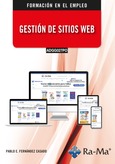
(ADGG027PO) Gestión de sitios web
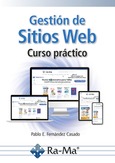
Gestión de sitios web. Curso práctico
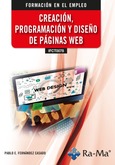
(IFCT0078) Creación, programación y diseño de páginas web

(IFCD0127) Desarrollo web para comercio electrónico
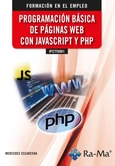
(IFCT0081) Programación básica de páginas web con Javascript y PHP
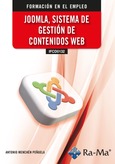
(IFCD0132) Joomla, sistema de gestión de contenidos web

(IFCD022PO) Desarrollo web para comercio electrónico
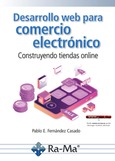
Desarrollo Web para comercio electrónico. Construyendo tiendas online
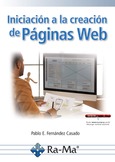
Iniciación a la creación de páginas web
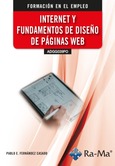
(ADGG039PO) Internet y fundamentos de diseño de páginas web



